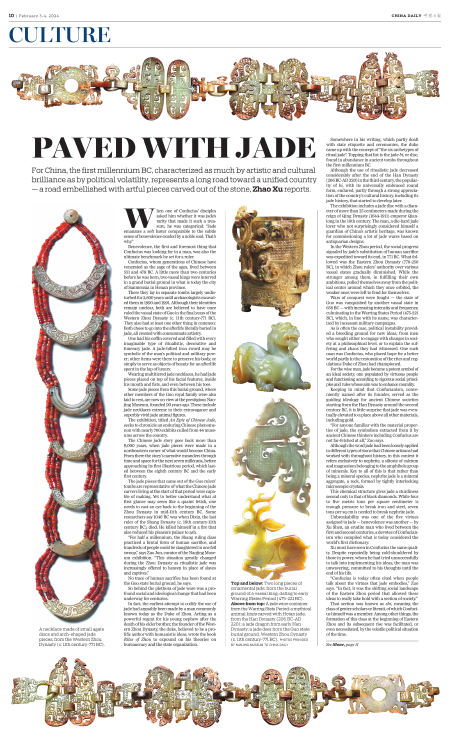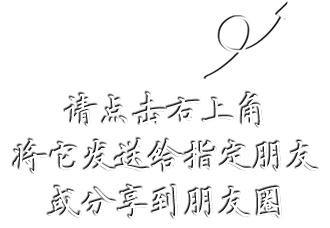
A necklace made of small agate discs and arch-shaped jade pieces, from the Western Zhou Dynasty (c. 11th century-771 BC).

Two long pieces of ornamental jade, from the burial ground of a vassal king, dating to early Warring States Period (475-221 BC).

Two long pieces of ornamental jade, from the burial ground of a vassal king, dating to early Warring States Period (475-221 BC).
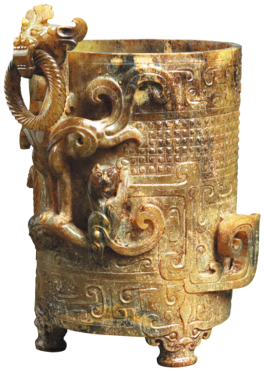
A jade wine container from the Warring State Period.
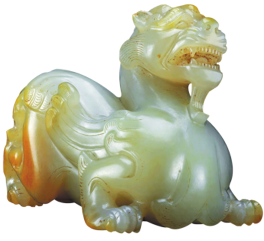
A mythical animal bixie carved with Hotan jade, from the Han Dynasty (206 BC-AD 220).
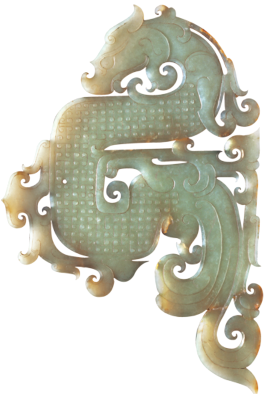
A jade dragon from early Han Dynasty.
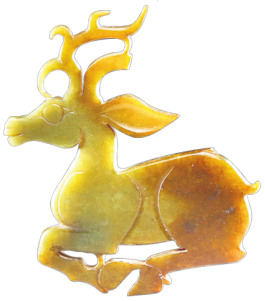
A jade deer from the Guo state burial ground, Western Zhou Dynasty (c. 11th century-771 BC).
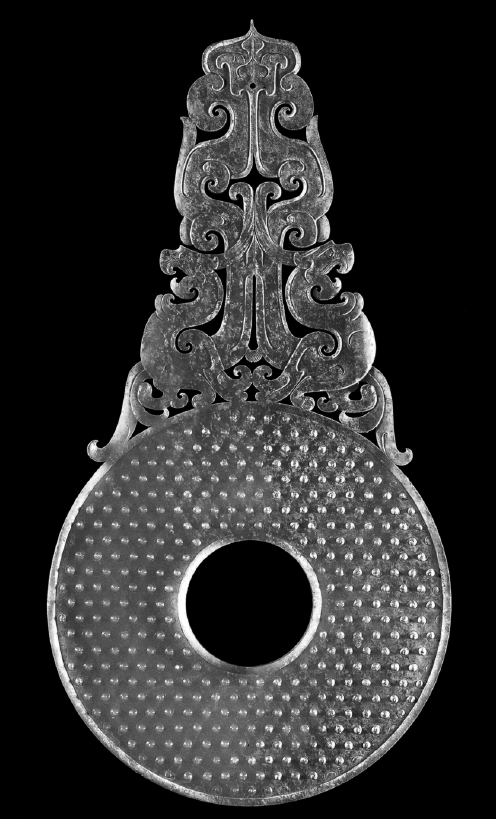
A jade disc topped by a pair of back-facing dragons, from the early Han Dynasty (206 BC-AD 220).
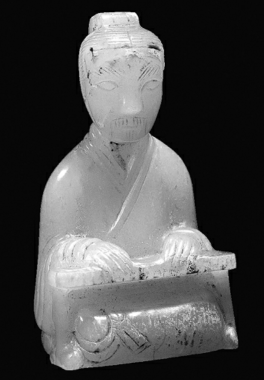
A jade seated figurine from Han Dynasty vassal king Liu Sheng's burial chamber.
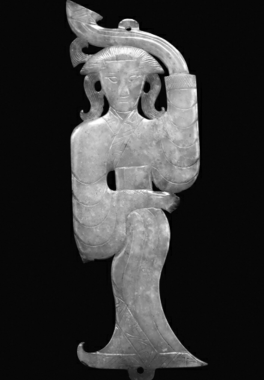
A jade dancing figurine from late Warring States Period (475-221 BC).
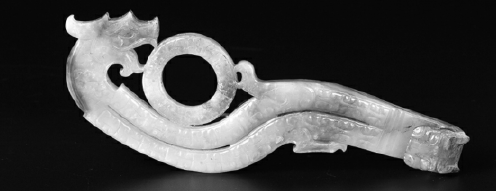
A jade dragon belt buckle from the Warring States Period (475-221 BC);
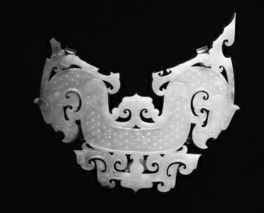
A jade double-dragon decorative plaque, from the early Han Dynasty (206 BC-AD 220);
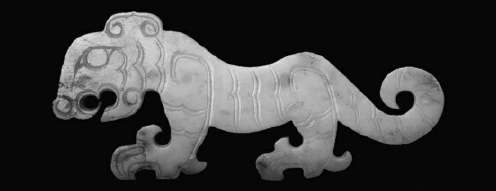
A jade tiger from the Guo state burial ground, Western Zhou Dynasty (c. 11th century-771 BC).

Zuo Jun, curator
When one of Confucius' disciples asked him whether it was jade's rarity that made it such a treasure, he was categorical: "Jade emanates a soft luster comparable to the subtle sense of benevolence exuded by a noble soul. That's why."
Benevolence, the first and foremost thing that Confucius was looking for in a man, was also the ultimate benchmark he set for a ruler.
Confucius, whom generations of Chinese have venerated as the sage of the ages, lived between 551 and 479 BC. A little more than two centuries before he was born, two vassal kings were interred in a grand burial ground in what is today the city of Sanmenxia in Henan province.
There they lay in separate tombs largely undisturbed for 2,800 years until archaeologists excavated them in 1990 and 1991. Although their identities remain unclear, both are believed to have once ruled the vassal state of Guo in the final years of the Western Zhou Dynasty (c. 11th century-771 BC). They also had at least one other thing in common: Both chose to go into the afterlife literally buried in jade, all created with consummate artistry.
One had his coffin covered and filled with every imaginable type of ritualistic, decorative and funerary jade. A jade-hilted iron sword may be symbolic of the man's political and military power; other items were there to preserve his body, or simply to serve as objects of beauty for an afterlife spent in the lap of luxury.
Wearing multitiered jade necklaces, he had jade pieces placed on top of his facial features, inside his mouth and fists, and even between his toes.
Some jade pieces from this burial ground, where other members of the Guo royal family were also laid to rest, are now on view at the prestigious Nanjing Museum, founded 90 years ago. These include jade necklaces extreme in their extravagance and superbly vivid jade animal figures.
The exhibition, titled An Epic of Chinese Jade, seeks to chronicle an enduring Chinese phenomenon with nearly 700 exhibits culled from 44 museums across the country.
The Chinese jade story goes back more than 9,000 years, when jade pieces were made in a northeastern corner of what would become China. From there the story's narrative meanders through time and space for the next seven millennia, before approaching its first illustrious period, which lasted between the eighth century BC and the early first century.
The jade pieces that came out of the Guo rulers' tombs are representative of what the Chinese jade carvers living at the start of that period were capable of making. Yet to better understand what at first glance may seem like a quaint fetish, one needs to cast an eye back to the beginning of the Zhou Dynasty in mid-11th century BC. Some researchers say 1046 BC was when Dixin, the last ruler of the Shang Dynasty (c. 16th century-11th century BC), died. He killed himself in a fire that also reduced his pleasure palace to ash.
"For half a millennium, the Shang ruling class practiced a brutal form of human sacrifice, and hundreds of people could be slaughtered in one fell swoop," says Zuo Jun, curator of the Nanjing Museum exhibition. "This situation greatly changed during the Zhou Dynasty as ritualistic jade was increasingly offered to heaven in place of slaves and captives."
No trace of human sacrifice has been found at the Guo state burial ground, he says.
So behind the plethora of jade ware was a profound social and ideological change that had been underway for centuries.
In fact, the earliest attempt to codify the use of jade had arguably been made by a man commonly known today as the Duke of Zhou. Acting as a powerful regent for his young nephew after the death of his elder brother, the founder of the Western Zhou Dynasty, the duke, believed to be a prolific author with humanistic ideas, wrote the book Rites of Zhou to expound on his theories on bureaucracy and the state organization.
Somewhere in his writing, which partly dealt with state etiquette and ceremonies, the duke came up with the concept of "the six archetypes of ritual jade". Topping that list is the jade bi, or disc, found in abundance in ancient tombs throughout the first millennium BC.
Although the use of ritualistic jade decreased considerably after the end of the Han Dynasty (206 BC-AD 220) in the third century, the popularity of bi, with its universally embraced round form, endured, partly through a strong appreciation of the country's cultural history, including its jade history, that started to develop later.
The exhibition includes a jade disc with a diameter of more than 25 centimeters made during the reign of Qing Dynasty (1644-1911) emperor Qianlong in the 18th century. The man, a die-hard jade lover who not surprisingly considered himself a guardian of China's artistic heritage, was known for commissioning a lot of jade wares based on antiquarian designs.
In the Western Zhou period, the social progress signaled by jade's substitution of human sacrifice was expedited toward its end, in 771 BC. What followed was the Eastern Zhou Dynasty (770-256 BC), in which Zhou rulers' authority over various vassal states gradually diminished. While the stronger among them, in fulfilling their own ambitions, pulled themselves away from the political center around which they once orbited, the weaker ones were left to fend for themselves.
Wars of conquest were fought — the state of Guo was vanquished by another vassal state in 658 BC — with increasing intensity and frequency, culminating in the Warring States Period (475-221 BC), which, in line with its name, was characterized by incessant military campaigns.
As is often the case, political instability provided a breeding ground for new ideas, from men who sought either to engage with changes in society at a philosophical level, or to explain the suffering and chaos they had witnessed. One such man was Confucius, who placed hope for a better world partly in the restoration of the rites and regulations Duke of Zhou had championed.
For the wise man, jade became a potent symbol of an ideal society, one populated by virtuous people and functioning according to rigorous social principles and rules whose aim was to enhance morality.
Keeping in mind that Confucianism, conveniently named after its founder, served as the guiding ideology for ancient Chinese societies starting from the Han Dynasty around the second century BC, it is little surprise that jade was eventually elevated to a place above all other materials, including gold.
"For anyone familiar with the material properties of jade, the symbolism extracted from it by ancient Chinese thinkers including Confucius are not far-fetched at all," Zuo says.
Although the word jade had been loosely applied to different types of stone that Chinese artisans had worked with throughout history, in this context it refers exclusively to nephrite, a silicate of calcium and magnesium belonging to the amphibole group of minerals. Key to all of this is that rather than being a mineral species, nephrite jade is a mineral aggregate, a rock, formed by tightly interlocking microscopic crystals.
This chemical structure gives jade a sturdiness second only to that of black diamonds. While four to five metric tons per square centimeter is enough pressure to break iron and steel, seven tons per sq cm is needed to break nephrite jade.
Unbreakability was one of the five virtues assigned to jade — benevolence was another — by Xu Shen, an erudite man who lived between the first and second centuries, a devotee of Confucianism who compiled what is today considered the world's first dictionary.
Xu must have seen in Confucius the same quality. Despite repeatedly being cold-shouldered by those in power, whom he had tried unsuccessfully to talk into implementing his ideas, the man was unwavering, committed to his thoughts until the end of his life.
"Confucius is today often cited when people talk about the virtues that jade embodies," Zuo says. "In fact, it was the shifting social landscape of the Eastern Zhou period that allowed these ideas to really take hold with a section of society."
That section was known as shi, meaning the class of gentry scholars or literati, of which Confucius himself was a member. Among other things, the formation of this class at the beginning of Eastern Zhou and its subsequent rise was facilitated, or even necessitated, by the volatile political situation of the time.
The common challenge every state faced to survive and be strong cast into doubt the validity of a bureaucracy filled entirely by members of the aristocracy. As a remedy, educated individuals of merit were brought into government. Largely coming from the giant pool of "commoners", these men, who formed the shi class, were to dominate the political, social and cultural dialogue of ancient China.
"Members of this class were eager to impose on larger society their moral and aesthetic standards," Zuo says. "And jade was chosen to convey a sense of righteousness that they believed had provided justification to their newfound social status."
This new reinterpretation led to both the democratization and secularization of jade usage, he says. "During Western Zhou, meticulously crafted ritual jade, the discs for example, were routinely given by the Zhou rulers to vassal kings as gifts and tokens of recognition. While these continued to be made during Eastern Zhou, many ornamental and utilitarian jade pieces were also produced to meet the demands of those who either identified with jade or simply treated it as an object of beauty."
These included everything from pendants worn around the neck or waist to belt hooks and wine containers, from sword and scabbard accouterments for men to face powder boxes for women. The trend continued unabated for a few centuries, and the climax was reached around the third century BC.
This was despite the great social upheaval of the time. In 256 BC, the Eastern Zhou Dynasty, whose last ruler had attempted but failed to thwart the eventual subjugation of all vassal states by the state of Qin, ceased to exist. Thirty-five years later, the Warring States Period came to a close as China was united for the first time under a man who declared himself Qinshihuang, meaning, the first ruler of the dynasty of Qin.
Yet this was far from the end of tumult. The Qin Dynasty (221-206 BC), despite all its military glory, lasted for a mere 15 years. More turmoil ensued until it was replaced by the Han Dynasty.
"It was an iconoclastic time in every sense of the word, with rules being dismantled in every field, including art-making," Zuo says. "The jade designs of the time had moved away from the symmetrical design scheme adopted by the Shang Dynasty and Zhou Dynasty ritual bronzes."
The aesthetic level achieved with such creative liberty has been admired but never quite replicated, let alone surpassed in later periods. Although many scholars tend to view the jade-making under Emperor Qianlong of the Qing Dynasty as a pinnacle for the art, what was made during that time, despite its technical perfection, never fully achieved the fine balance between subtlety and simplicity, between stateliness and idiosyncrasy.
One state that towered over all others with jade art was the state of Chu. Chu, which survived Qin's mighty army until 223 BC, two years before the end of the Warring States Period, was once the largest state of its time. The objets d'art made by Chu artisans, most notably jade and lacquerware, marries superb artisanship with highly imaginative designs that often featured energetically swirling lines, ultrasophisticated patterns and mythical animals including dragons, which were to become the arch emblem of Chinese civilization.
"Liu Bang, who founded the Han Dynasty in 206 BC, came from what is now the city of Xuzhou in Jiangsu province, a region that once fell within the borders of Chu," Zuo says. "That may explain why Han jade ware, especially that made in its initial two centuries, embraced the same aesthetic forged by the people of Chu."
Between the defeat of Chu and the rise of Han, the notion of China emerged as much from reality as from people's consciousness. For proof, archaeologists have discovered one Han Dynasty bronze mirror that, as part of its design, included the inscription: "This mirror is made in accordance with the laws of the ancient sages and the rules of heaven.… Examine your countenance with it, to rid yourself of anything inauspicious, and pray for the stability of China."
The sages and heaven, listened to by the Chinese throughout history, were both linked to jade.
"The people of Han, especially its ruling elite, were firm believers of a posthumous journey to heaven," Zuo says.
"And they relied on funerary jade to build the flight of stairs between the terrestrial and the celestial."
During construction work in 1968, the grand burial chamber of a Han Dynasty vassal king named Liu Sheng was discovered in Mancheng county, Hebei province, 700 kilometers from the Guo state burial ground. Magnificent pieces of jade were brought to light, including a disc topped by a pair of back-facing dragons, which is now on display in Nanjing Museum.
Yet standing head and shoulders above them all is a jade shroud composed of more than 2,400 rectangular jade pieces sewn together with gold thread. The shroud covered the body of the deceased from head to toe and included a disc that once covered the crown of the man's head.
While the outfit was expected to keep the man's body intact, the hole in the middle of the disc provided an exit so that his soul could make its heavenward journey.
Throughout his life, Liu Sheng lived in the shadow of his young brother Liu Che, handpicked by their father to be the seventh emperor of the Han Dynasty. Liu Che, also known as Emperor Wudi, proved himself a forceful ruler and visionary leader. Around 139 BC he sent out a mission to explore the vast terrain to the west of his territory, a daring effort that eventually gave rise to the creation of the ancient Silk Road, named after its most famous commodity.
For the first time, Hotan jade, found along the rivers or deep in the Kunlun Mountains in what is today Xinjiang Uygur autonomous region, revealed its existence to people who had never failed to allow themselves to be captivated by jade's soft luster.
Two mythical animals, as well as a seated figurine from the burial chamber of Liu Sheng, all featured in the exhibition, are believed to have been carved out of Hotan jade in the initial few years after this discovery.
"Ever since then, Hotan jade has remained hugely popular with the Chinese, although the trade on the Silk Road was carried out intermittently throughout the second half of the Han Dynasty, when it gradually lost its former glory," Zuo says.
The Han Dynasty ended in 220. China was splintered, only to be reunited some 45 years later. The cycle was repeated throughout the first millennium, but the artistic height that ancient Chinese jade making had reached during the few centuries leading up to the Common Era proved insurmountable in a sense.
Those who ask why may need to take a few steps back to gain a broader view of the time, noted as much for military confrontation and maneuver as for philosophical and political innovation. The wars, for all the havoc wreaked and pain induced, presented immense challenges and adversities that in turn were met with unwavering courage and unyielding resolve.
That spirit, a mixture of idealism and heroism, had coursed through every form of art created during those years, with pride molten into bronze and a sense of verve dancing on the pure surface of jade. A reverence toward jade was still there, but it was coupled with a growing tendency among individual artist-artisans to treat their creations as personal expressions, adding emotional depth to visual magnificence.
"War provided incentives for developing technology, especially the metallurgy of iron," Zuo says.
"And the knowledge gained in the making of weaponry could be readily translated into the making of tools, including those used to make jade malleable.
"Times were trying and life short. In retrospect, what better way to let these intense but fleeting moments endure than to dedicate them to the making of something whose beauty lasts?"
Contact the writer at zhaoxu@chinadaily.com.cn
Timeline
�6�1 Shang Dynasty (c. 16th century-11th century BC)
�6�1 Western Zhou Dynasty (c. 11th century-771 BC)
�6�1 Eastern Zhou Dynasty (770-256 BC)
�6�1 Warring States Period (475-221 BC)
�6�1 Qin Dynasty (221-206 BC)
�6�1 Han Dynasty (206 BC-AD 220)
